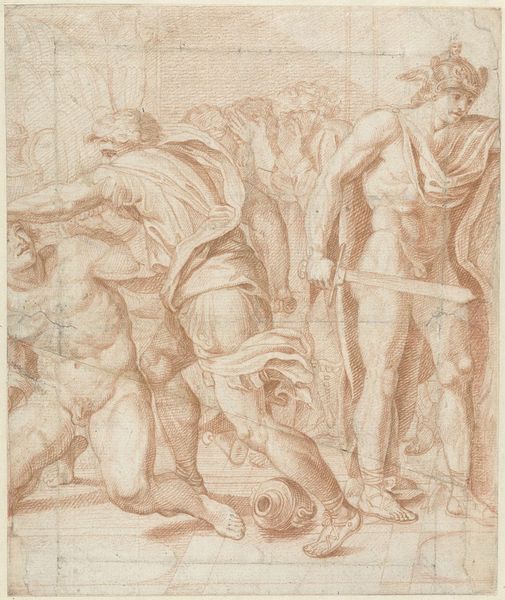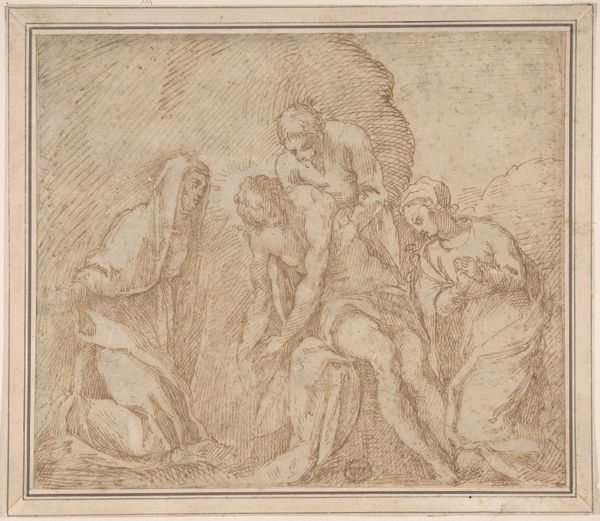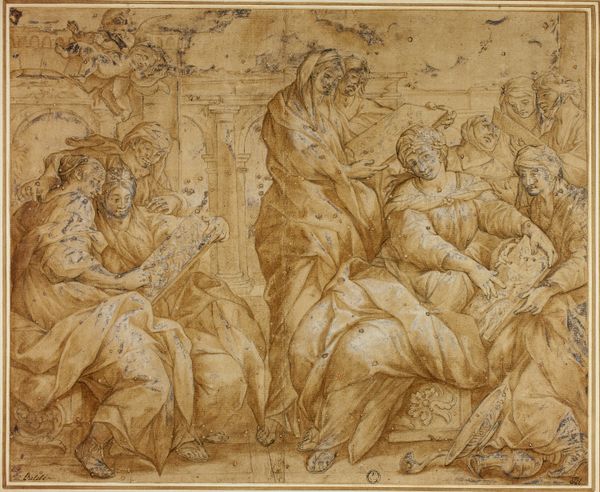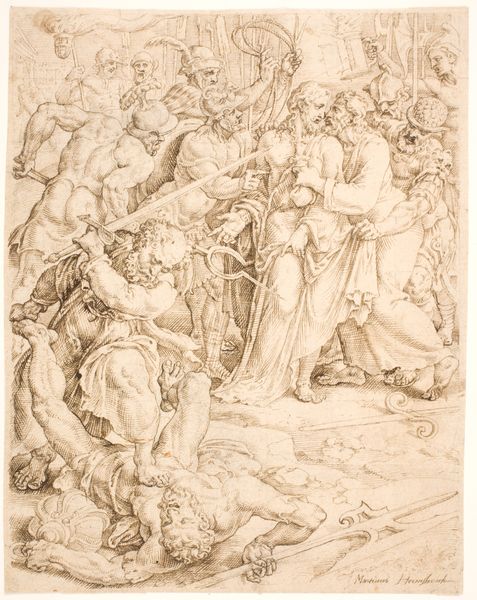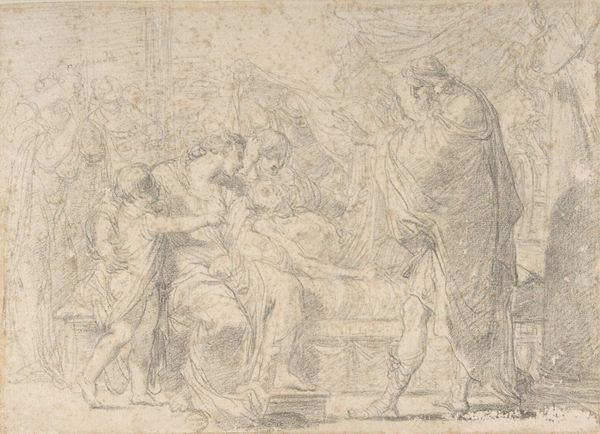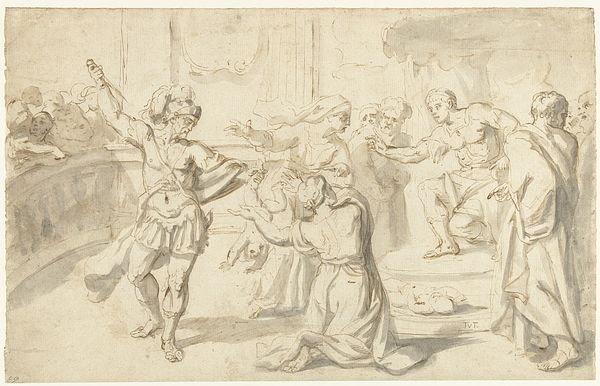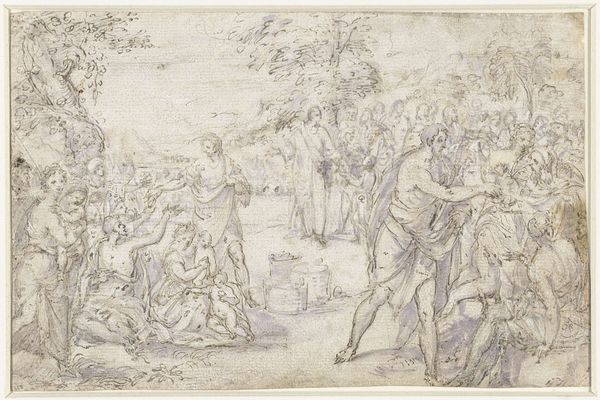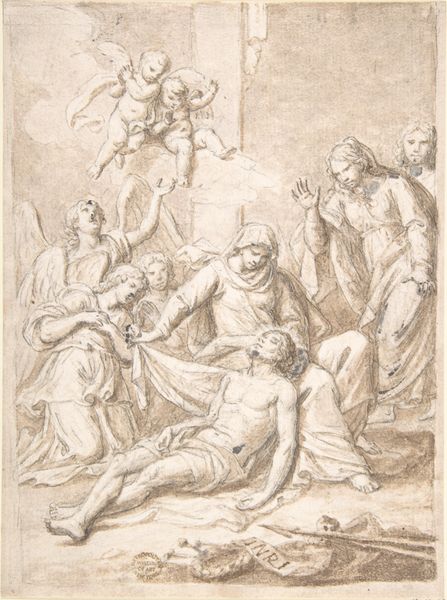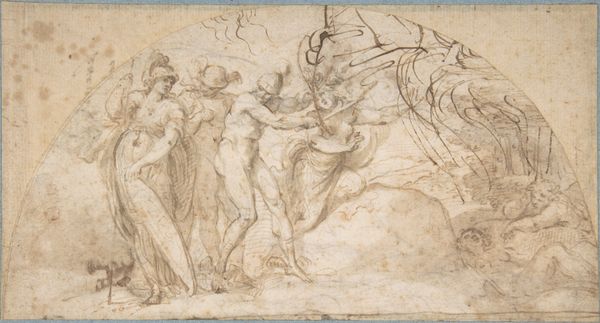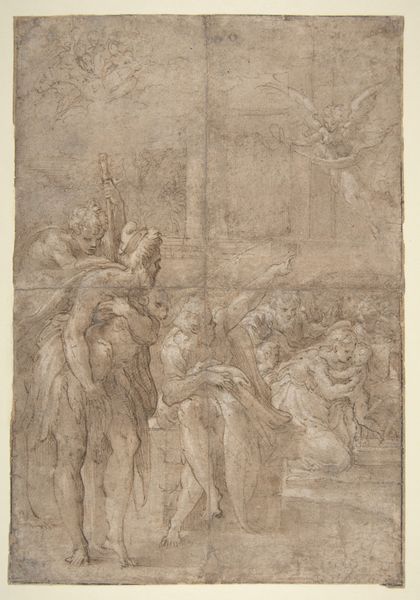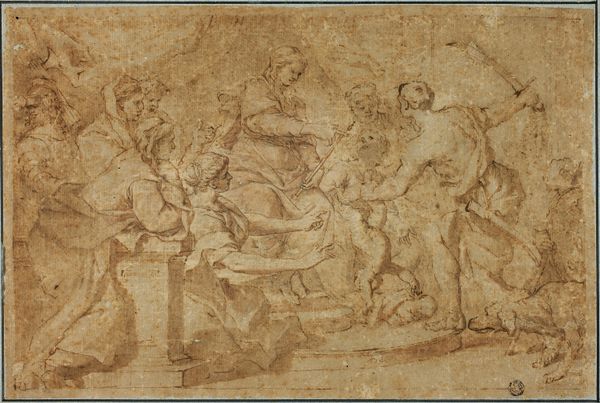
drawing, print, paper, chalk, charcoal
#
drawing
#
narrative-art
# print
#
charcoal drawing
#
figuration
#
paper
#
chalk
#
genre-painting
#
charcoal
#
italian-renaissance
Dimensions: 316 × 402 mm
Copyright: Public Domain
Editor: This is Pietro da Cortona's "Infant Oedipus Brought Home by Shepherd," likely created between 1675 and 1699. It's a drawing, probably in charcoal and chalk on paper. I'm struck by how theatrical the composition is; everyone seems to be posing. What story does this drawing tell, from your perspective? Curator: The theatricality you observe isn't accidental. Cortona was deeply involved in stage design, influencing his compositional approach to painting and drawing. Here, consider the politics of imagery: he's visualizing a moment of salvation, yes, but also establishing Oedipus's preordained fate, his social destiny, if you will, within a narrative that was widely known to audiences. Editor: So, it’s not just about a baby being saved? Is Cortona playing with audience expectations? Curator: Precisely! Think about the intended audience: aristocratic patrons familiar with classical literature. He’s reminding them of the burdens and the privileges of power, of fate versus free will – all wrapped in elegant, easily digestible visuals. Note the figures, how their garments flow. Editor: The flowing fabric makes it appear dreamlike. I thought that style belonged to an older time period. Curator: Yes, but in the late 17th century, antiquity was in fashion and there were many artists reviving older forms of paintings! Does looking at it with this background help you think differently about the work? Editor: Absolutely. Knowing that it was for the elites with a certain worldview shifts how I understand the image. Thanks! Curator: And for me, thinking about its reception prompts considering who art history typically spotlights, and whose stories get lost! It enriches the dialogue.
Comments
No comments
Be the first to comment and join the conversation on the ultimate creative platform.
